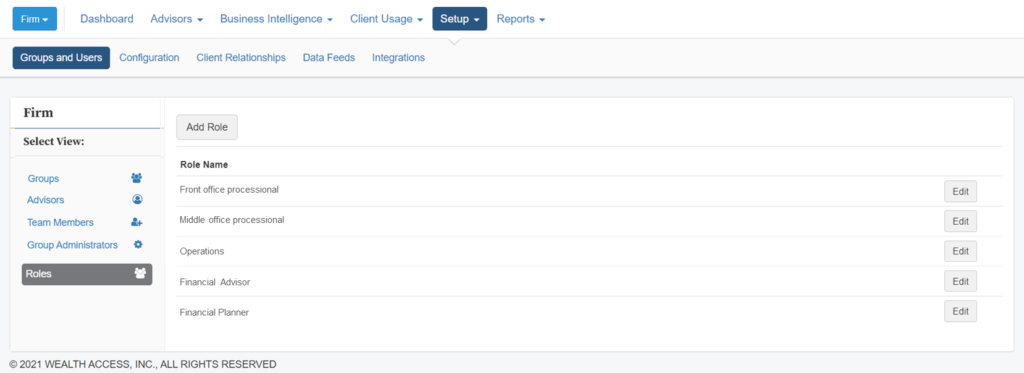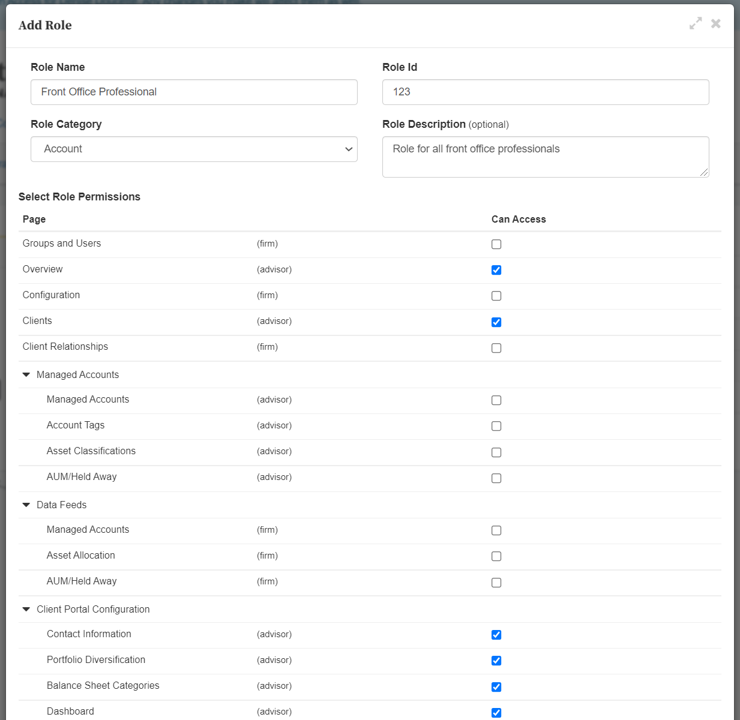When it’s time to onboard a new employee, adding them to all the right technology systems used is one of the most time-consuming practices for most organizations.
But onboarding isn’t just time-consuming—it’s also critically important for how successful an employee is with a firm. One out of ten employees have left a company due to a bad experience during onboarding.
In this blog, we’re covering the three most important things to do when onboarding a new employee, and how roles-based authorization in Wealth Access can make at least one of them easier.
3 Ways to Make Employee Onboarding a Better Experience
A standardized onboarding program has been shown to increase employee retention by up to 50% over companies that don’t create processes. This isn’t an exhaustive list, but these three suggestions can help you get started.
- Make it Personal
Depending on the size of a business, onboarding a new employee can either be a solo affair or spent in a room with dozens of other new hires. In either case, making the onboarding experience personal to each person is possible. If you do it right, your firm gets a head start on building a long and trusting relationship with your new employee.
It might seem simple, but even something as some new swag can help to foster good feelings. You may not know your employee personally on day one, but you can at least make sure they get the right sized t-shirt or hoodie. - Assign a Dedicated Coach
When you can work with friends, your productivity and satisfaction increases. One survey found that over half of employees work with more passion when they’re working with friends.
To that end, pairing a dedicated coach (an older, more seasoned employee) with a new hire during onboarding can help to communicate your firm’s culture and values quickly and help them start building interpersonal relationships right away. - Automate What You Can
The last tip is one that makes life easier both for an organization onboarding new employees, and the employees going through onboarding.
Manual processes can wreck the day of even the most productive team member. When onboarding, the sheer number of tasks to check off makes that even more true. Automating tasks can help to get new hires up to speed faster, and it frees up time for existing staff to keep doing their jobs productively.
To that end, we’ve unveiled a new roles-based authorization capability in Wealth Access to make sure that you can get your technology into the hands of your new team members faster, with the exact right permissions.
Roles-based Authorization and Permissioning Structure
You can now expand the number of user roles you have in the Wealth Access platform with the new permissioning structure released in the October 2021 Product Update.
While firms have traditionally set up roles by financial advisor, front office professional, middle office professional, and financial planner, there have often been times when additional functional entitlements are needed.
Previously, you could assign 3 base roles—firm administrator, team member, and advisor. Any functional entitlements for different types of employees would have had to be made at the user level.
While that process worked, it also required more time and setup for the administrator.
The roles-based authorization enhancement allows firm administrators to establish new roles and specify what users can or cannot do at that role instead of assigning those rights on a one-by-one basis.
As your firm brings new employees onboard, you can now easily assign each employee to a specific role and have Wealth Access functional authorizations deploy immediately so they’re ready to start using the platform right away.
Take a Tour Today
Ready to see how quickly roles-based authorizations in Wealth Access can help you transform and improve your onboarding experience for new employees?
Click here to contact our team and schedule a consultation about your firm’s needs.





